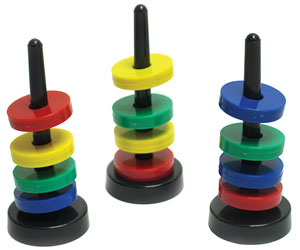
The bumph from the school arrived today containing school calender, results, agenda for staff-meeting etc, but all I wanted to see was whether or not I was teaching second years next year. Up until now we taught science on a rota system at Junior Cert level. All the students in the year are split into groups and taught Biology by the specialist Biology teacher, Chemistry by the specialist Chemistry teacher, etc. They rotate after a set amout of class periods to that each term they get to do one complete cycle.
The system sounds good in theory in that the specialist teacher will have a greater enthusiasm and knowledge for each topic than a general teacher. And for the teacher it means much less preparation time, both for theory and experiment. It certainly made my life easier for my first few years.
More recently we have begun to notice disadvantages, and like the little Dutch boy with his finger in the dyke (can’t see that phrase lasting much longer in our pc world), once we began to question the system it quickly became apparent to all that it was actually failing the students.
Firstly there was no ownership for teachers over indivdual students, so none of us were particularly concerned with a given student’s progress, or got to know their strengths as well as we should have.
Secondly, a lot of time was lost in adminstration during each rotation; results which should have been transferred from one teacher to another often got lost or simply forgotten about.
If the number of periods allocated to each group varied (due to teacher illness or other unforeseen breaks) then one group advanced more than another. This always caused problems when setting a common exam paper at the end of term.
So this year for the first time I get a class to myself at second-year level and will presumable get to hang on to them next year. Which means I get time to try out some of the ideas I have been reading about over the last few years:
- Class Blogs. I hope to be taking advice from Tom Kendall who has helped his school set up class blogs for different subjects in Loreto Navan.
- eTwinning. It would be nice to do a class science project in conjunction with a similar class from another country. It means I finally get to use the forms Conor Galvin gave me a couple of years ago.
- Scifest. After going on about it ad nauseum last year we actually had just one team enter. But they won in three different categories (congratulations again Georgina and Philippa!), so hopefully we can use that to promote the competition further this year. I would hope to use these projects as their entry for their Junior Cert projects the following year.
- Mindmaps. This is a wonderful tool which is I would guess is very much underused. there are lots of different programs out there so choosing one will be part of the research.
- YouTube. I have yet to upload a video for Junior Cert Science, so knowing that non-Physics specialists will be teaching Physics in the school will hopefully give me a focus to develop this over the year ahead.
- Sensors. Developing Investigative learning with the use of data-logging sensors (student led, as opposed to me demonstrating).
Bottom line:
I don’t know how much of this I can incorporate but if by the end of the year I have spoken less and listened more than would otherwise be the case I will consider it a success.







